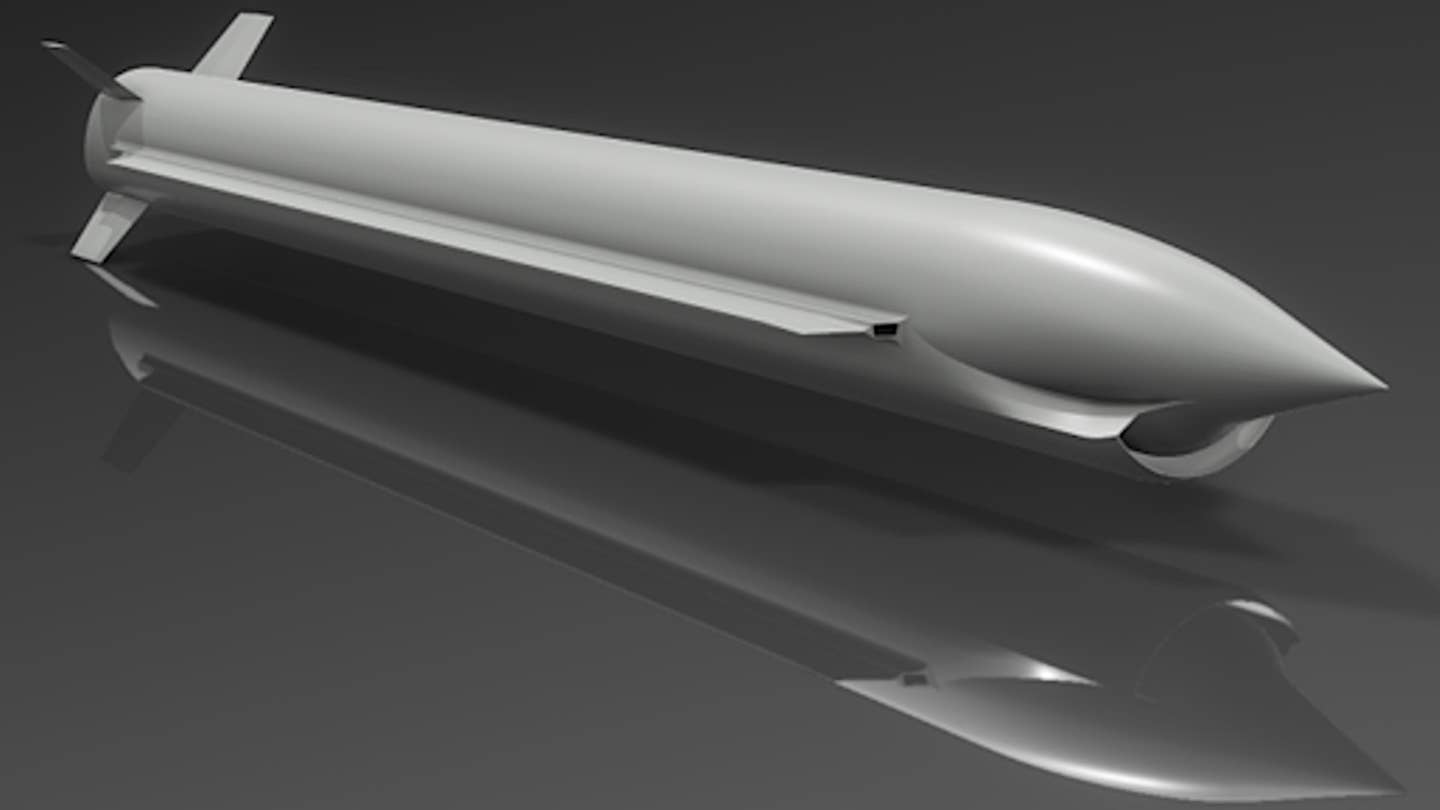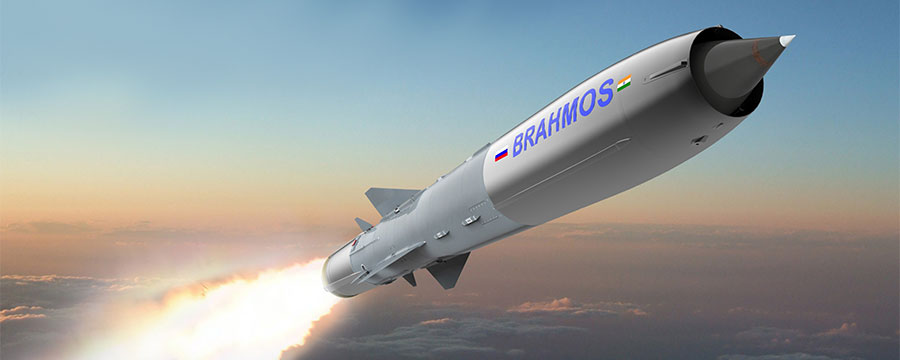For a considerable period, the BrahMos missile, developed collaboratively by India and Russia, has held the prestigious title of the world’s deadliest supersonic anti-ship missile.
The BrahMos missile has been a ‘game-changer’ in the domain of supersonic cruise missiles, setting a high standard with its impressive speed of Mach 3 and a range of approximately 450 kilometers.
Its versatility—deployable from land, sea, and air—coupled with pinpoint accuracy has made it a formidable asset in modern warfare. This dominance in a market filled with numerous subsonic options has given BrahMos a significant edge.
Despite the existence of Russia’s P-800 Oniks and China’s YJ-12 supersonic cruise missiles in active service, BrahMos stands out as the sole contender that has captured the attention of the global defense market as a leading supersonic anti-ship missile.
However, the landscape appears to be shifting. Multiple countries are now entering the race to develop their own supersonic anti-ship missiles, signaling a new era in missile technology.
A New Contender: 3SM Tyrfing
This shift became particularly evident when the Norwegian company Kongsberg recently signed an agreement with Germany’s Diehl Defence and MBDA Deutschland to develop the 3SM Tyrfing supersonic strike missile.
This partnership, led by Kongsberg, merges the strengths of these companies, bringing together decades of missile development experience to create an advanced, long-distance, maneuverable, supersonic strike missile. The missile is intended for Norway, Germany, and allied nations in the future.
While details on how the 3SM Tyrfing will be guided to its targets or even the specific nature of these targets remain unclear, Kongsberg has described the weapon as a “naval strike missile” rather than strictly an anti-ship missile.
Despite being in the initial design phase, the companies involved in the 3SM Tyrfing program are confident that it will produce a long-range strike missile capable of neutralizing future surface threats.

Once operational, the 3SM Tyrfing missiles will be used by Norwegian and German vessels to complement their existing Naval Strike Missiles (NSMs).
Although no technical or performance details of the 3SM have been released, a concept art previously shared by the Norwegian Ministry of Defence (MoD) and Kongsberg suggests that the missile will utilize advanced solid-fuel ramjet propulsion.
This propulsion technology has been demonstrated under the joint Norwegian-US Tactical High-speed Offensive Ramjet for Extended Range (THOR-ER) program.
South Korea’s Supersonic Challenger
South Korea, a relatively new dominant force in the weapon export market, is also stepping up its game. The country has announced plans to develop an anti-ship missile capable of achieving supersonic speeds, further adding to the array of advanced weaponry in its arsenal.
Named the ‘Air-to-Ship Guided Missile-II,’ this missile is poised to have multi-role capabilities, including land attack. Like the French MICA air-to-air missile, this air-launched supersonic missile will offer two choices of warheads, allowing for mission customization based on operational requirements.
The missile’s seeker will incorporate RF (Radio Frequency), IIR (Imaging Infrared), and EO (Electro-Optical) capabilities, enabling it to respond effectively to a wide range of situations and targets.
South Korea’s expertise in developing multi-mode seekers, previously utilized in various missiles such as Hyunmoo and L-SAM, underlines the country’s commitment to cutting-edge missile technology.
The ‘Air-to-Ship Guided Missile-II’ will feature a ducted-ramjet propulsion system, offering enhanced speed and maneuverability. Although smaller than initially expected, with its diameter reduced from 400mm to 350mm, the missile is expected to pack a punch.
Weighing in at 940kg and measuring approximately 6 meters in length, it promises to be a formidable addition to South Korea’s military capabilities. The launch test is scheduled to take place from an FA-50 fighter in 2025.

The details regarding the production and deployment timeframe of the ‘Air-to-Ship Guided Missile-II’ remain scarce. However, South Korea’s track record in developing and fielding advanced weaponry suggests that this supersonic missile may soon become operational.
Japan’s ASM-3A Cruise Missile
In comparison to South Korea, Japan has been quietly forging ahead, positioning itself as a frontrunner in this competitive arena. Tokyo initiated the development of its supersonic anti-ship missile, the ASM-3, back in FY 2010, gaining a head start in this critical aspect of modern warfare.
The ASM-3, an air-launched anti-ship missile, boasts supersonic cruising speeds exceeding Mach 3 thanks to its Integral Rocket Ramjet engine. Although the missile’s development was concluded in 2017, it remained undeployed.
This was due to concerns regarding its limited range of 200 km, which was deemed insufficient to effectively counter the Chinese Navy’s long-range air defense capabilities.
However, in March 2019, reports emerged indicating plans to extend the ASM-3’s range to 400 km or beyond. In December 2019, the Japanese Defense Ministry allocated ¥10.3 billion in its 2020 budget to upgrade the missile.

Subsequently, in December 2020, the Japan Ministry of Defense unveiled the ASM-3A, a variant of the ASM-3 equipped with an extended range, and announced intentions to commence mass production with the 2021 defense budget.
Furthermore, another upgraded iteration of the ASM-3, known as the ASM-3 (Kai), is currently in development. It is anticipated that the ASM-3 may eventually be integrated into the successor of the F-2 aircraft, which is slated for retirement in the 2030s.
Why The Fever For Supersonic Missiles?
In the ever-evolving landscape of military technology, the dynamics between offense and defense are in constant flux. One area where this struggle is particularly evident is in the realm of cruise missiles.
Recent advancements in air defense systems have tipped the scales in favor of defenders, particularly against subsonic cruise missiles, which have become increasingly vulnerable to interception due to their slower speeds.
Subsonic cruise missiles have long been favored for their cost-effectiveness and long-range capabilities, making them ideal for land attack strikes in prolonged conflicts.
However, their sluggish speeds now present a considerable disadvantage against modern air defense systems. Defenders now have greater time to react and deploy countermeasures, significantly reducing the effectiveness of these once-feared weapons.
On the other hand, the demand for supersonic cruise missiles has been steadily rising, especially against high-value targets such as maritime assets.
These missiles, traveling at speeds above the sound barrier, provide minimal response time for air defense systems to detect, track, and engage. This advantage has made them increasingly attractive for military planners seeking to overcome sophisticated defense networks.
For example, since the onset of the conflict, Ukraine has faced significant challenges in intercepting Kh-22 supersonic cruise missiles. Despite efforts to defend against these formidable weapons, Ukrainian forces have not successfully downed a single Kh-22 missile.
In December 2023, Kyiv acknowledged that Russian forces had launched approximately 300 Kh-22 missiles, also known as X-22, at Ukraine, yet none have been intercepted or shot down.
Rising Competition Threat To BrahMos’ Popularity?
While the heightened competition within the supersonic missile market will pose certain obstacles in the future, BrahMos possesses several advantageous factors that could help alleviate potential threats to its export orders.
To begin with, BrahMos has already cemented its position as an exceptionally capable and adaptable missile system, boasting a well-documented track record of top-notch performance and dependability.
Moreover, BrahMos has several distinctive attributes, including its supersonic velocity, extensive range, and pinpoint accuracy, which could potentially afford it a competitive advantage over alternative missiles in specific scenarios.
In a noteworthy achievement, BrahMos Aerospace clinched its inaugural export order for the missile from the Philippines in 2022, and deliveries have recently started.

It is also reported that discussions are underway with more than 12 countries across South Asia, the Middle East, and South America regarding the acquisition of the missile system, with Indonesia nearing the finalization of a contract.
Furthermore, India is actively developing a sleeker and more stealthy iteration of the missile, dubbed BrahMos NG. Military experts opine that BrahMos NG is poised to surpass the original BrahMos in export performance due to its reduced cost and enhanced adaptability across various launch platforms.

BrahMos also reaps the benefits of a robust strategic partnership between India and Russia, which furnishes substantial support for its endeavors in development, production, and marketing.
However, it’s crucial to note that despite concerted efforts over the years, India has only secured only one contract. Even though there is no direct competition, negotiations with many potential customers have not yielded further success.
This underscores the imperative for India to ramp up its diplomatic initiatives to secure additional contracts and establish BrahMos as a widely operational product before its competitors gain traction in the market.
- Contact the author at ashishmichel(at)gmail.com
- Follow EurAsian Times on Google News




